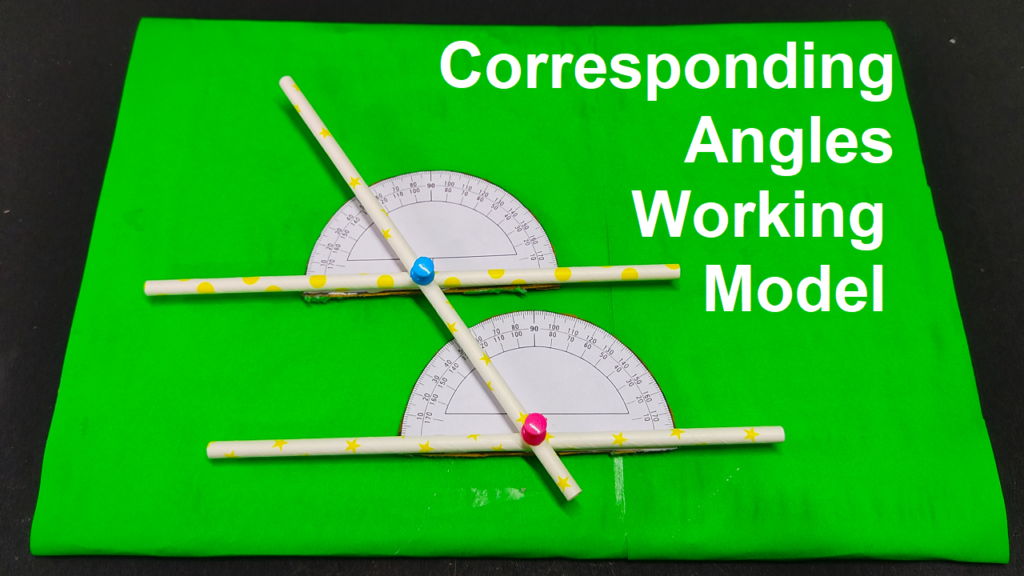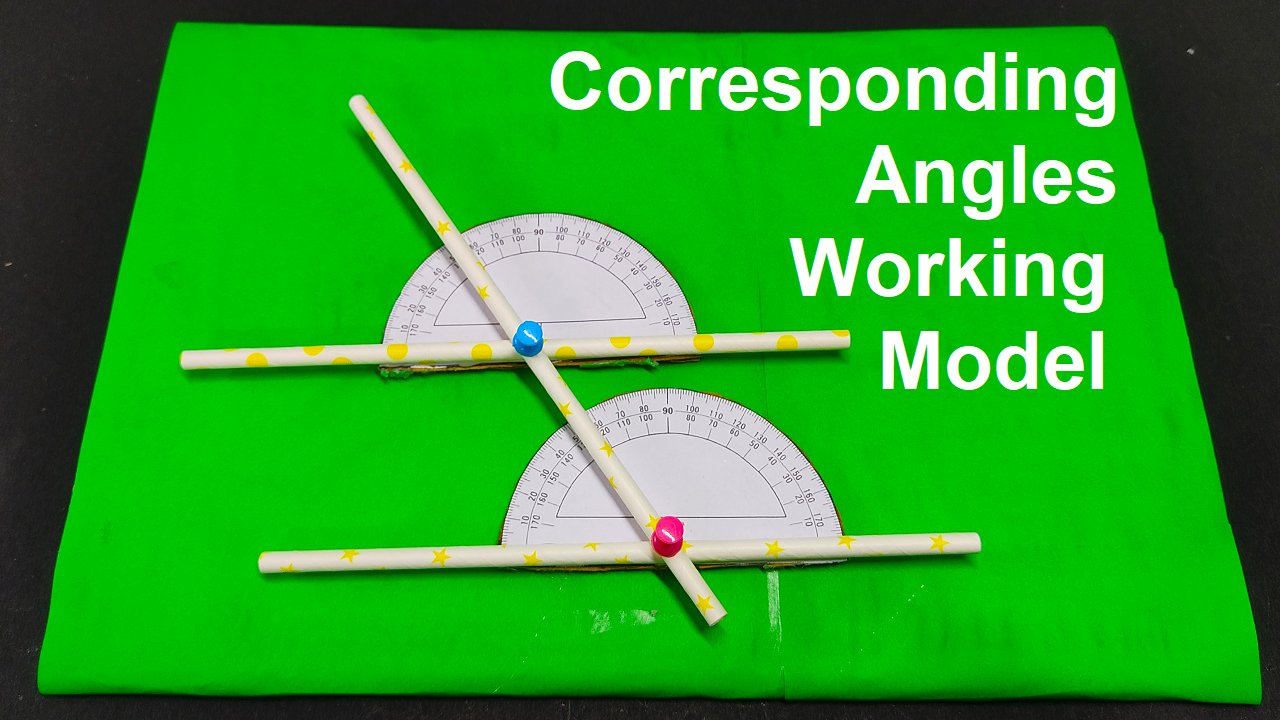Creating a working model to demonstrate corresponding angles using two protractors can be an effective way to illustrate this concept for a math exhibition.

Here’s a simple DIY project using cardboard and two protractors:
Materials Needed:
- Two protractors
- Cardboard
- Ruler
- Pencil
- Compass
- Scissors
- Glue or tape
- Markers
- Wooden dowels or straws
- Small weights (e.g., small beads, paper clips)
Steps to Create the Corresponding Angles Working Model:
Step 1: Prepare the Base:
- Cut a large piece of cardboard to serve as the base for your working model.
Step 2: Attach Protractors:
- Glue or tape two protractors to the cardboard, ensuring that their centers align.
Step 3: Create Angle Templates:
- Draw angle templates on colored paper or cardboard. These templates should represent corresponding angles in pairs.
Step 4: Label the Angles:
- Label each angle template with the corresponding angle names (e.g., ∠A, ∠B, ∠C, ∠D).
Step 5: Attach Angles to Dowels:
- Glue or tape each angle template onto wooden dowels or straws.
Step 6: Attach Dowels to the Base:
- Attach the dowels or straws with the angle templates to the cardboard base. Place them in a way that allows for easy rotation.
Step 7: Add Weights (Optional):
- Attach small weights (e.g., beads or paper clips) to the bottom of each angle template to help keep them in a vertical position.
Step 8: Display and Explain:
- Set up your working model at the exhibition table.
- Demonstrate corresponding angles by adjusting the angles on one protractor and observing the corresponding changes on the other protractor.
Step 9: Optional – Angle Facts:
- Create small cards or labels to display interesting facts or properties about corresponding angles.
Explanation:
- During your exhibition, explain the concept of corresponding angles and how they are related in geometric figures.
- Allow visitors to interact with the model, adjusting the angles and observing the corresponding changes.
This working model provides a tangible representation of corresponding angles, allowing for an interactive and visual learning experience at a math exhibition. Visitors can physically manipulate the angles to see how corresponding angles are related, reinforcing their understanding of this geometric concept.

